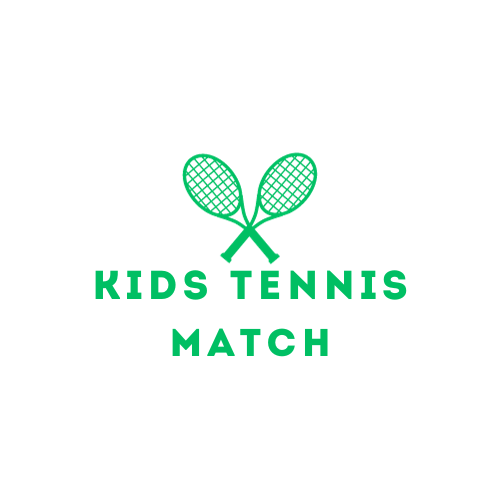FAQs on Kids’ Tennis: A Comprehensive Guide for Parents
Tennis is a popular and widely enjoyed sport worldwide, with a rich history of grand champions and thrilling matches. For kids, tennis can be an excellent way to develop physical fitness, hand-eye coordination, social skills, and discipline. If your child is interested in taking up tennis, or if you’re considering introducing them to the sport, you likely have several questions. In this article, we’ll explore some frequently asked questions (FAQs) about kids’ tennis, providing valuable insights and guidance for parents.
-
What Age is Ideal for Kids to Start Playing Tennis?
Children can start playing tennis at a very young age, as early as 3 or 4 years old. However, the optimal age to begin formal tennis lessons can vary from child to child. Generally, kids as young as 5 or 6 can start taking lessons. The key is to ensure they have the physical and emotional readiness to understand basic instructions and enjoy the game.
-
What Equipment Do Kids Need to Play Tennis?
To start playing tennis, children will need:
- Tennis Racket: Choose a junior-sized racket that’s appropriate for your child’s age and height. These rackets are lighter and smaller to accommodate smaller hands and bodies.
- Tennis Balls: Kids can start with foam or low-compression balls, which are easier to hit and control. As they progress, they can transition to standard tennis balls.
- Proper Footwear: Sturdy and comfortable athletic shoes with good traction are essential to prevent slipping and support quick movements on the court.
-
How Long Should Tennis Lessons Be for Kids?
The duration of tennis lessons for kids can vary depending on the child’s age and skill level. Younger children may have shorter attention spans and physical limitations, so lessons can be as short as 30 minutes. Older children and more advanced players can benefit from 45-minute to 1-hour lessons. Regularity, such as weekly lessons, is important for skill development.
-
Is Tennis a Safe Sport for Kids?
Tennis is generally considered a safe sport for kids, but it’s essential to take precautions to minimize the risk of injuries. Ensure your child uses proper footwear, follows a warm-up routine, and practices good sportsmanship. Moreover, consider investing in protective gear such as wristbands, elbow supports, and even helmets if necessary.
-
What are the Benefits of Kids Playing Tennis?
Tennis offers a range of physical, mental, and social benefits for kids, including:
- Physical Fitness: Tennis helps kids develop agility, strength, and endurance.
- Hand-Eye Coordination: Playing tennis enhances coordination and reflexes.
- Discipline: The sport requires focus and discipline to improve skills and win matches.
- Social Skills: Tennis can be played individually or in teams, fostering teamwork and sportsmanship.
-
How Can I Encourage My Child to Stay Interested in Tennis?
To keep your child engaged in tennis, consider the following:
- Make It Fun: Keep lessons enjoyable, and encourage play with friends to make it a social experience.
- Set Realistic Goals: Help your child set achievable goals to track their progress.
- Attend Matches: Watching professional tennis or attending local matches can inspire your child.
- Variety in Practice: Mix in fun games and drills to prevent monotony.
-
What is the Best Way to Find a Tennis Coach for My Child?
To find a suitable tennis coach for your child, consider the following steps:
- Ask for Recommendations: Seek referrals from other parents or tennis-playing friends.
- Online Searches: Many coaches and academies have websites or listings online.
- Visit Tennis Clubs: Local tennis clubs often have resident coaches who offer lessons.
- Trial Lessons: Consider starting with a trial lesson to see if the coach and your child have good chemistry.
-
How Can I Support My Child’s Tennis Development?
Supporting your child’s tennis journey involves more than just financial investment. Be emotionally supportive, attend matches, and show enthusiasm for their progress. Encourage regular practice, and consider providing opportunities for competitive play. Additionally, ensure your child maintains a healthy diet and gets adequate rest to promote optimal physical development.
-
What’s the Difference Between Recreational and Competitive Tennis for Kids?
Recreational tennis is focused on fun, learning, and fitness, with less emphasis on competition. Competitive tennis involves participating in tournaments and matches, and it requires a higher level of commitment and training. The choice between recreational and competitive tennis should align with your child’s interests and goals.
-
Are There Scholarships Available for Young Tennis Players?
Yes, there are various scholarship opportunities for young, talented tennis players. Colleges and tennis academies often offer scholarships based on skill and potential. To increase the chances of receiving scholarships, it’s crucial to maintain a strong academic record in addition to excelling in tennis.
In conclusion, introducing your child to tennis can be a rewarding experience. It offers numerous physical, mental, and social benefits and can foster a lifelong passion for the sport. By addressing these frequently asked questions, you’ll be better equipped to guide your child through their tennis journey and support their development both on and off the court.



